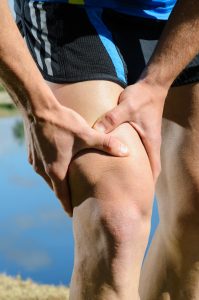sports injuries

What are sports injuries?
Muscle tension, joint sprain, or fracture causing pain, swelling, bruising, difficulty or loss of movement, and the possibility of strange movements.
In the absence of an experienced person, it is recommended not to move the infected organ and install it by means of wooden boards and ligament in the lower limb injuries or by way of support by using the other hand in the upper limb injuries and be sure to have a pulse in the extremity of injury and consult a doctor or going to hospital.
Initial treatment by Rice principle R.I.C.E “treatment: Rest, Ice, Compression, Elevation”
Comforts :
The injured person should not use the affected organ as the use of the affected member increases the impact of the infection, delays healing, increases pain, and increases the risk of bleeding. Crutches are used to avoid body weight pressure in knee, leg, ankle and foot injuries.
The splints are used in upper limb injuries.
Use of snow:
Relieves swelling and pain and thus helps healing, by constricting vessels and capillaries and reducing bleeding.
Place a ligament above the injury: accelerate healing by reducing swelling, taking into account
Do not stiffen it.
Lift the affected organ above the heart level:
To help relieve pain and swelling by using cushions, pillows or suspension of the affected organ.
Should I use any treatments?
Non-steroidal anti-inflammatory drugs such as diclofenac and ibuprofen may be used or consult your doctor.
Warm Therapy:
Delays healing if used immediately after injury. It is used only after the demise of the swelling (approximately three days after infection) to control the swelling and inflammation to accelerate healing and reduce the effects of scars.
Healing:
Do not rush to return to normal activity, it delays healing. All patients need rehabilitation before returning to normal activity.
Use of analgesics if necessary
What do you know about the rupture of the frontal cruciate ligament of the knee
The ACL is the most exposed ligament between the four knee joints, and is most common in people who practice the most active and powerful sports (such as football or basketball) or combat sports of all kinds. The human is about 32mm long and 12-12 mm wide. It consists of two straps that attach the leg bone to the thigh from the inside of the knee, so it plays a very important role in the stability of the knee. It prevents the leg bone from moving forward for the femur when the front cruciate ligament injury is usually felt by the patient with a sensation inside the knee accompanied by deep pain and severe with The swelling is clear and large during the first hours, and this leads to a determination in the movement of the knee with a clear limp and a feeling of instability in the injured knee ((Instability)).
Therefore, the patient must put ice packs on the knee during the first hours and reviewed by the orthopedic surgeon, which is given the drugs of residence and anti-irritant (NSAIDs)) and advised to rest and put a light compression on the knee and the use of crutches during the first days after injury, The patient to perform reconstructive surgery, according to the following factors:
- Severity of injury (partial or full)
- The stability of the knee
- The level of activity of the patient and the degree of his practice of sport
- An accompanying knee injury
The surgery usually takes place several weeks after the injury, when the knee swell has been removed and the knee movement improves. During these weeks it is recommended to do exercises to strengthen the muscles of the thigh.
It is also known that the injury of the ligament may be accompanied by other injuries in the knee by about 50%, it may be associated with the injury of the cartilage or crescent of the disk or the joint of the joint or even another ligament of the same knee, and diagnosis by clinical examination, there are special tests for the front ligament (test Lachman’s ), (Pivot shift) also helps the radiographic image and MRI to confirm the diagnosis and give a clear picture of the nature of the injury.
Anterior cruciate ligament injury can be treated with conservative methods and physiotherapy in cases of partial or partial rupture of the ligament if the patient does not suffer from symptoms of knee instability during walking or simple exercise. Patients who have fractures with knee instability, professional athletes or workers who need to be fixed in their knees to protect them from falling as construction workers or who have a ligament injury such as cirrhosis of the cartilage, the repair surgery of the ligament is the best solution and the success rate of surgery may be up to 95 %.
The repair surgery of the ligament, in different ways, keeps the knee stable and allows the patient to gradually return to practicing different types of sports. The annual number of cases in which the restoration of the cruciate ligament is estimated at about 400,000.
When the injury becomes chronic, the symptoms are less severe and the patient complains of repeated knee instability (the sensation of the knee being betrayed) especially when running or walking quickly or the rise of the ladder or descent, and may recur swelling with the weakness and atrophy of the muscles of the frontal groin and over time occur The roughness of the ride.

